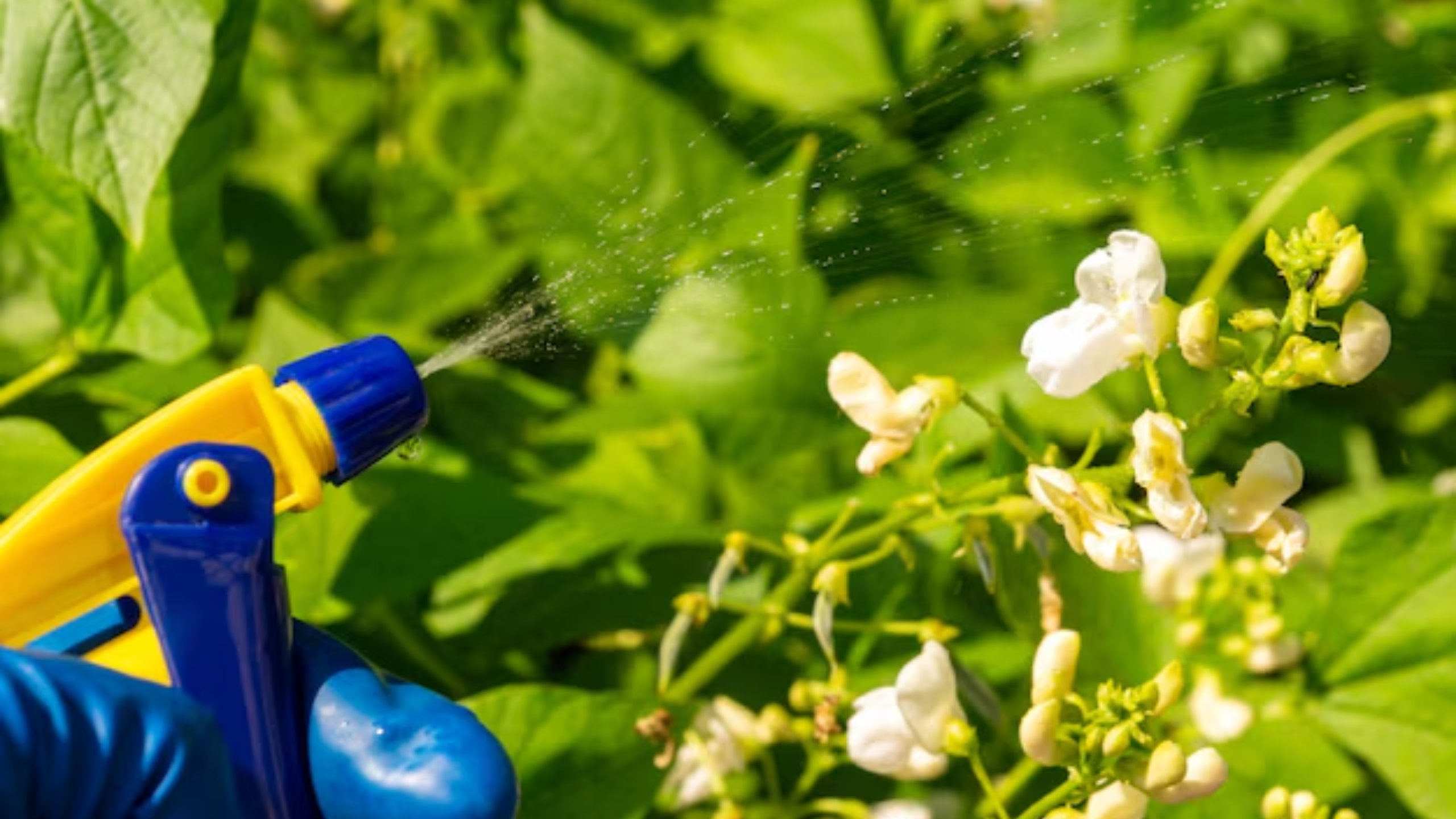Are pests and insects threatening to ruin your beautiful garden? Want to avoid harsh chemical pesticides that can harm your plants and the environment? Fortunately, there are simple, eco-friendly solutions you can prepare at home to protect your plants naturally. These homemade sprays are easy to make, safe for pollinators like bees, and effective at deterring common garden pests.
Let’s explore three easy DIY sprays that you can prepare with everyday ingredients found in your kitchen.
1. Garlic Defense Spray: A Natural Insect Repellent
Why Use Garlic?
Garlic contains sulfur compounds that act as natural repellents for many insects. It’s a potent, safe way to keep pests away without harming your plants.
How to Prepare:
- Ingredients:
- 5 garlic cloves
- 500 ml water (about 2 cups)
- 2 teaspoons mild liquid soap (like dish soap)
- Steps:
- Crush or finely chop the garlic cloves.
- Place the garlic in a container and cover with water. Let it steep for about 12 hours.
- Strain the mixture to remove garlic bits.
- Add the liquid soap, which helps the spray adhere to plant leaves.
- Pour the mixture into a spray bottle, then dilute by adding an additional liter (about 4 cups) of water.
- Shake well before spraying.
Application:
Spray this mixture on the leaves, especially targeting areas where pests gather—such as the undersides of leaves. Reapply every few days and after rain.
2. Citrus Peels: Refreshing and Repelling

Why Use Citrus?
The strong scent of citrus peels is disliked by many insects, including aphids, whiteflies, and mosquitoes.
Preparation Steps:
- Ingredients:
- Peels from 1 lemon or orange
- 500 ml water (about 2 cups)
- Steps:
- Grate the citrus peels and soak them in boiling water.
- Let the mixture steep overnight (around 24 hours).
- Strain to remove peel fragments.
- Pour the infusion into a spray bottle.
Application:
Spray over your plants to create a citrus-scented barrier. Repeat daily or every other day for best results.
3. Oil and Soap Barrier: Creating an Insect Shield
Why Use Oil and Soap?
A mixture of natural oil and soap forms a protective film over plants, making it difficult for insects to feed or lay eggs.
Ingredients:
- 1 cup vegetable oil
- ¼ cup liquid dish soap
- Water for dilution
Steps:
- Mix the oil and soap thoroughly to create a potent base.
- For each application, dilute 1 teaspoon of this mixture in 1 liter of water.
- Shake well to combine before spraying.
Application:
Spray on the leaves, focusing on softer-bodied pests like aphids and whiteflies. This creates a physical barrier that pests find difficult to penetrate.
Benefits of These Homemade Sprays
- Eco-Friendly: Safe for beneficial insects such as bees and butterflies.
- Cost-Effective: Made from common household ingredients.
- Chemical-Free: No harmful toxins that could affect your family, pets, or environment.
- Effective: Suitable for common pests like aphids, whiteflies, and even some types of scale.
Common Questions
Q: Are these sprays safe for all plants?
Most home remedies are safe for a wide variety of plants, but always test a small area first to check for any adverse reactions.
Q: How often should I reapply these sprays?
Typically, every 3-4 days, or following heavy rain. Consistency is key for effective pest control.
Q: Do these sprays repel all pests?
They work well against soft-bodied insects like aphids, whiteflies, and mites. Larger or hard-bodied pests may require different approaches.
Q: Can I use these techniques on edible plants?
Yes, but always wait until the spray has dried and been on the plant for at least 24 hours before harvesting.
Final Tips for a Healthy Garden
- Regularly inspect your plants for pests and signs of disease.
- Combine natural sprays with good gardening practices—proper watering, pruning, and encouraging natural predators.
- Stay consistent—natural pest control methods might take a little longer but are safer and sustainable over time.
Your garden can flourish naturally, free from harmful chemicals. With these simple homemade sprays, you can maintain a vibrant, healthy, and eco-friendly garden that’s resilient against pests.


1 thought on “Natural Homemade Sprays to Keep Your Garden Pest-Free”